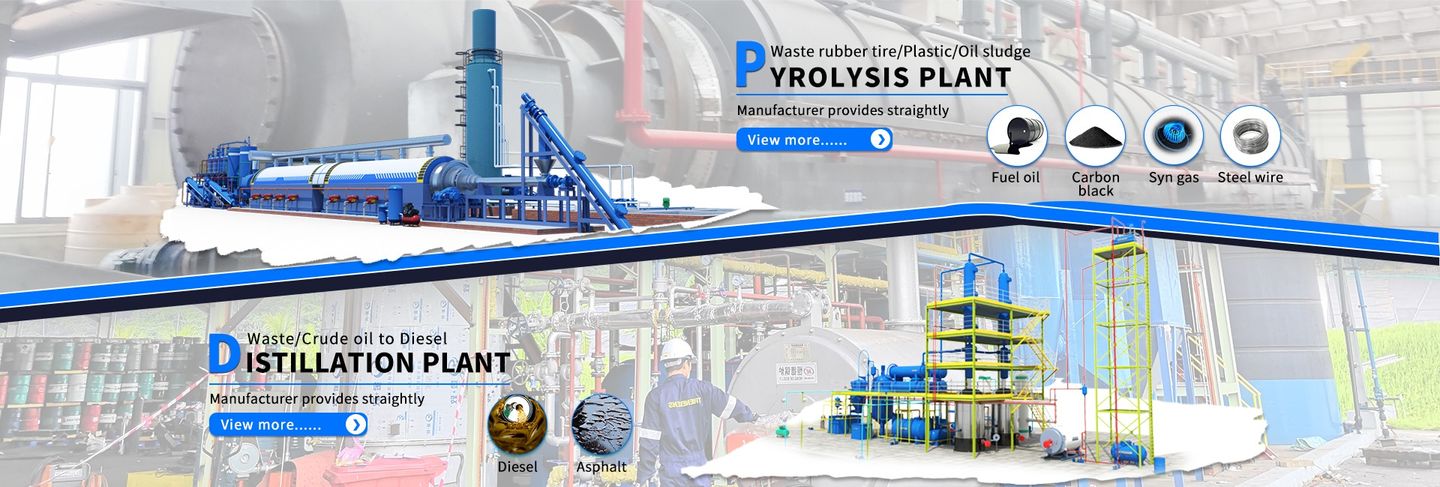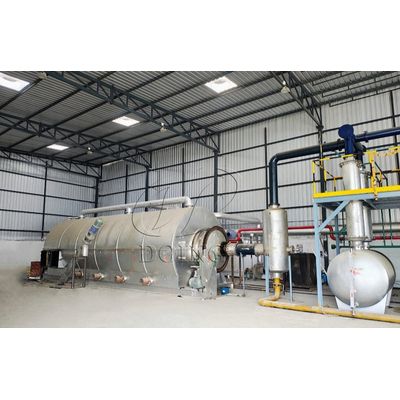

- Home
- Companies
- Henan Doing Machinery Equipment Co., ...
- News
- Is pyrolysis the same as cracking?

Is pyrolysis the same as cracking?
Pyrolysis and cracking are related processes, but they are not exactly the same. Here's a comparison:
Similarities
Decomposition nature: Both pyrolysis and cracking involve the decomposition of larger organic molecules into smaller ones. They are both thermochemical processes that occur under high - temperature conditions and in the absence or limited presence of oxygen.
Application in the petroleum industry: Both are used in the petroleum industry to convert heavy hydrocarbons into more valuable lighter products. For example, in an oil refinery, cracking is used to break down heavy crude oil fractions into gasoline, diesel, and other useful fuels. Pyrolysis can also be applied to convert biomass or plastic waste into valuable fuels and chemicals.
Differences
Feedstock and products: Pyrolysis is a more general term that can be applied to a wide variety of organic materials, including biomass, plastics, and coal. The products of pyrolysis can include gases (such as methane, ethylene, and hydrogen), liquids (such as bio - oil or pyrolysis oil), and solids (such as char or coke). Cracking, on the other hand, is more commonly associated with the petroleum industry and is specifically used to break down large hydrocarbon molecules in crude oil or petroleum fractions. The main products of cracking are lighter hydrocarbons, such as gasoline - range hydrocarbons, olefins (used in the production of plastics), and other petrochemical feedstocks.
Reaction conditions: Pyrolysis can occur over a wide range of temperatures and heating rates, depending on the feedstock and the desired products. In some cases, pyrolysis may be carried out at relatively low temperatures (around 300 - 500°C) for slow pyrolysis or at higher temperatures (above 700°C) for fast pyrolysis. Cracking, especially in the context of the petroleum industry, often involves specific temperature and pressure ranges. Catalytic cracking, which is commonly used in refineries, typically operates at temperatures around 450 - 550°C and moderate pressures. Thermal cracking, which is a non - catalytic process, may require higher temperatures (up to 700 - 900°C) and higher pressures.
Use of catalysts: Cracking often involves the use of catalysts to increase the reaction rate and selectivity towards specific products. Catalytic cracking is a widely used process in the petroleum industry to produce high - quality gasoline and other valuable products. In contrast, pyrolysis can be carried out with or without catalysts. Non - catalytic pyrolysis is common for some applications, such as the pyrolysis of biomass to produce bio - oil. However, in some cases, catalysts may be added to the pyrolysis process to modify the product distribution or improve the quality of the products.
In summary, while pyrolysis and cracking share some similarities in terms of the decomposition of organic molecules, they differ in terms of feedstocks, products, reaction conditions, and the use of catalysts.





